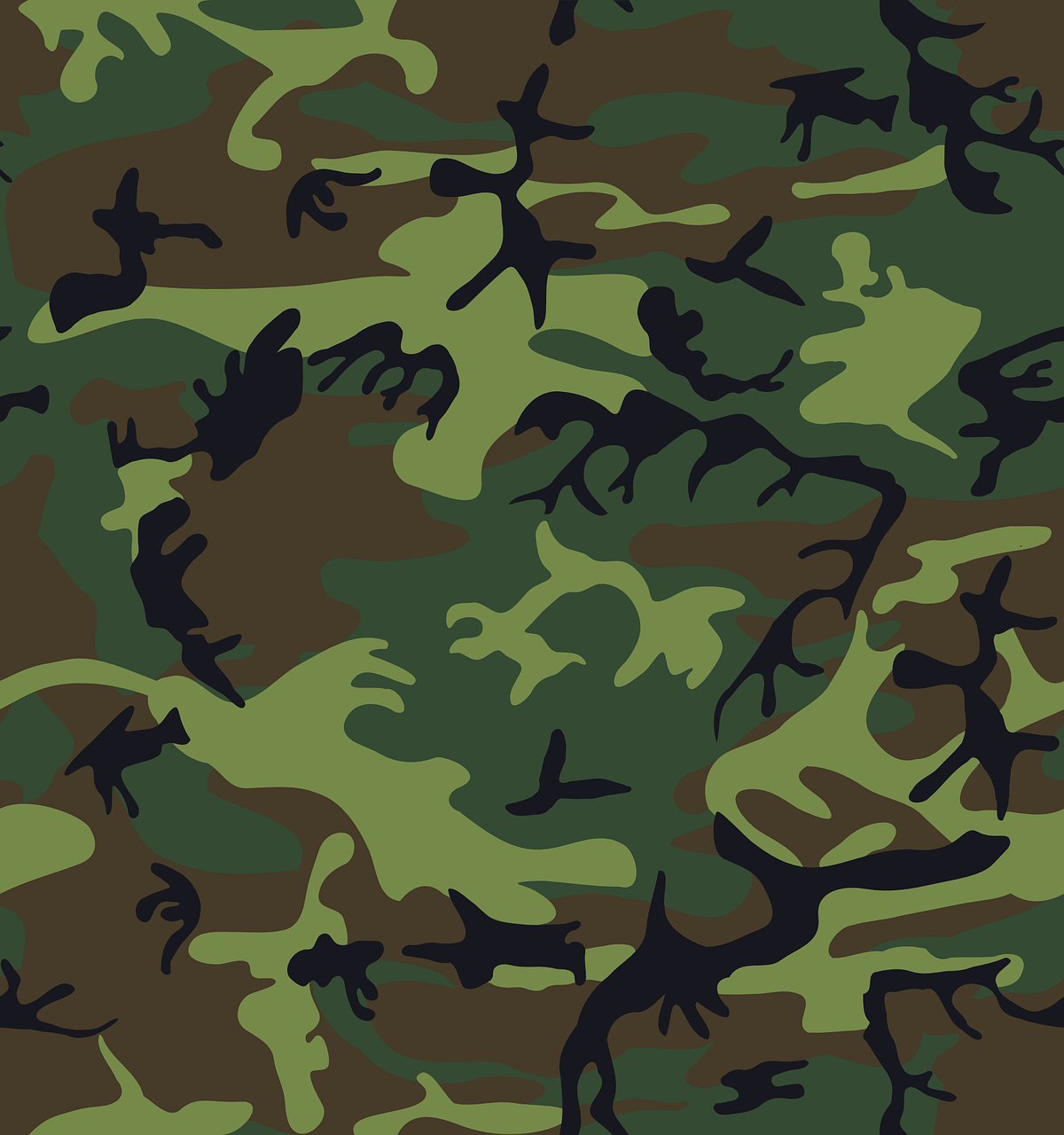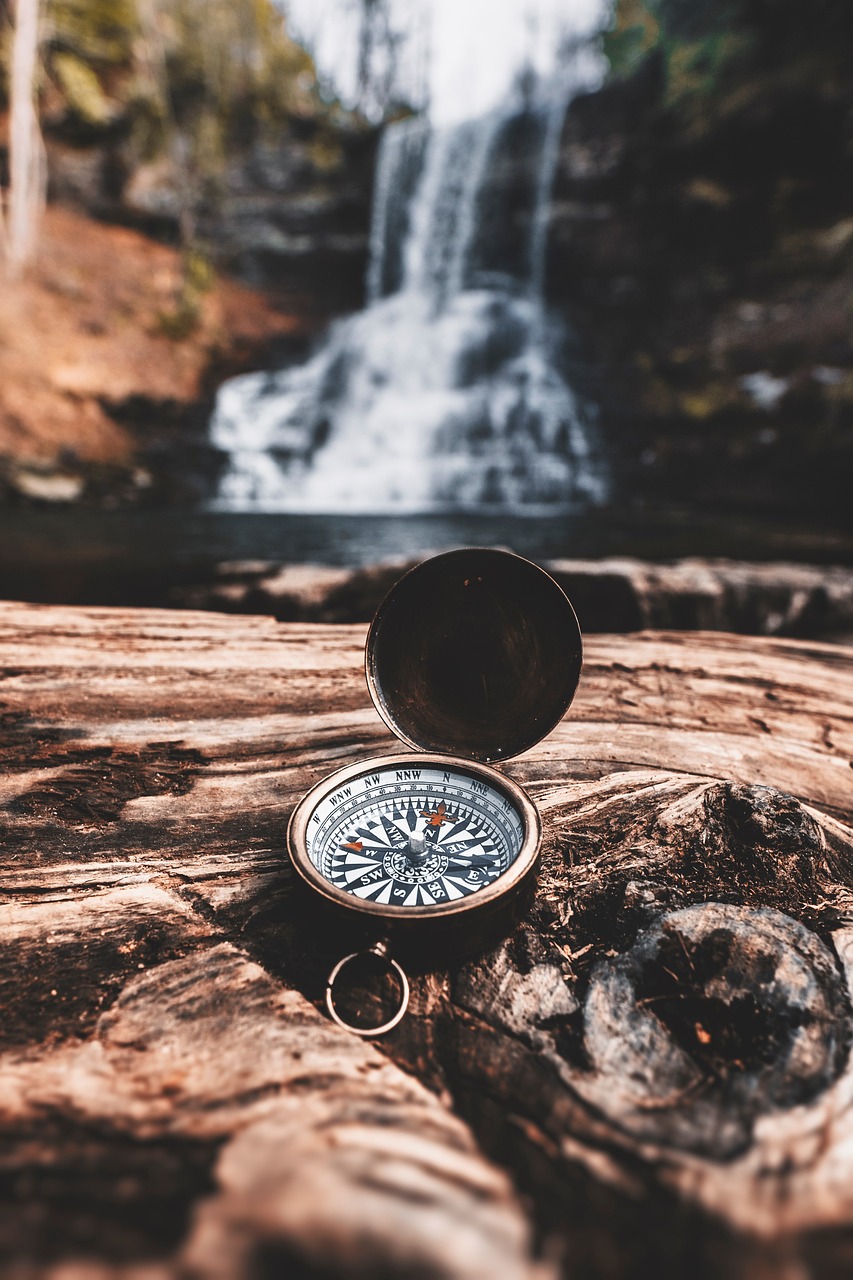Imagine finding yourself alone in the vast expanse of the wild, surrounded by untouched nature and uncharted territory. With no modern comforts or conveniences, your survival instincts kick in as you face the challenges of an untamed environment. In this article, we will explore the essential strategies and skills you need to not just survive, but thrive in the wilderness all on your own. From finding food and water sources to building shelter and navigating through unforgiving terrain, discover the secrets that will help you conquer the wild and emerge as a true survivor.
Finding Shelter
Understanding the importance of shelter
When venturing into the wild, finding shelter should be one of your top priorities. A shelter provides protection from harsh elements such as rain, wind, and extreme temperatures. It also offers a sense of security and can help you preserve body heat, preventing hypothermia in colder climates. Understanding the importance of shelter is crucial for your survival and well-being in the wilderness.
Identifying suitable locations for shelter
Choosing the right location for your shelter is fundamental. Look for areas that are protected from adverse weather conditions such as strong wind or heavy rainfall. Avoid low-lying areas that may flood during the rain. Instead, opt for higher ground that provides natural drainage. Look for sites near water sources, as they can be convenient for hydration and cooking purposes. Additionally, selecting an area with natural barriers, such as rocks or thick vegetation, can serve as a defense against wildlife.
Building a shelter
Once you’ve found a suitable location, it’s time to construct your shelter. There are various types of shelters you can build depending on the available resources and your skill level. One common and relatively simple shelter is the lean-to, which involves propping a sturdy branch or log against a tree and covering it with leaves or branches. Another option is a debris hut, created by forming a small frame with branches and covering it with layers of leaves, grass, or other natural materials. Experiment with different shelter designs and materials to find what works best for you.
Using natural materials for shelter
When building a shelter, it’s essential to utilize natural materials found in your surroundings. Fallen branches, leaves, moss, and rocks can be used to create a sturdy and camouflaged shelter. By working with the environment instead of relying on man-made materials, you can ensure a more sustainable and efficient shelter. Remember to leave minimal impact on the land, respecting and preserving the delicate ecosystem of the wilderness.
Finding Water
Understanding the importance of water
In any survival situation, water is vital. The human body can only survive for a few days without it, especially under physically demanding conditions. Understanding the importance of water and prioritizing its acquisition is crucial for your survival. Water not only quenches your thirst but also aids digestion, regulates body temperature, and supports overall bodily functions. Therefore, finding a reliable water source should be one of your primary objectives.
Identifying sources of water
In the wild, water can be found in various natural sources. Rivers, streams, lakes, and ponds are common sources of water in the wilderness. Look for areas with signs of flowing water or tracks of wildlife, as they often lead to watering holes. During rainfall, it’s essential to have containers or waterproof materials to collect rainwater. Additionally, keep an eye out for dew on plants in the early morning as it can be a potential source of hydration.
Collecting and purifying water
Although some water sources may appear clear, they can still contain harmful bacteria, parasites, or viruses that can lead to waterborne illnesses. It is crucial to purify the water before consuming it. Boiling water is one of the most effective methods to kill pathogens, but if you don’t have access to fire or a suitable container, there are alternative methods available. Water purification tablets or filters can be used to remove contaminants, and utilizing natural filtration techniques such as building a sand or charcoal filter can be useful in emergencies. Prioritize finding and purifying water to maintain your hydration and overall well-being.

Finding Food
Understanding the importance of food
While water is crucial, sourcing food is equally vital for your survival in the wild. Proper nutrition is essential to keep your energy levels up and maintain overall health. Understanding the importance of food and knowing how to find edible sources will greatly increase your chances of survival.
Identifying edible plants and fruits
One way to source food in the wild is by identifying edible plants and fruits. Familiarize yourself with the local flora and learn to distinguish between edible and poisonous plants. Look for common edible plants such as berries, nuts, and tubers. Be cautious and avoid plants with thorns, a strong smell, or signs of discoloration, as they may be toxic.
Hunting and fishing techniques
Another method of procuring food is through hunting and fishing. This requires a good understanding of local wildlife and their habitats. Learn basic hunting techniques, like tracking and setting traps, to catch small game. Fishing can be an effective means of obtaining protein-rich sustenance if you have access to a water source. Constructing simple fish traps or using a spear can increase your chances of success.
Building traps and snares
Building traps and snares can be a valuable skill when it comes to procuring food in a survival situation. Traps can be constructed using natural materials and designed to catch small animals. Research and practice different trap-building techniques, such as the figure-four deadfall, the snare, and the squirrel pole, to improve your chances of catching prey. Remember to prioritize ethical considerations and follow local regulations when hunting or trapping.
Navigating
Importance of navigation skills
Having the ability to navigate effectively in the wilderness is crucial for your safety and survival. Proper navigation skills allow you to find your way back to civilization, locate essential resources, and avoid getting lost. Understanding the importance of navigation and honing your skills will greatly increase your chances of being found or reaching safety.
Using natural landmarks
One of the simplest and most reliable ways to navigate is by using natural landmarks. Mountain ranges, rivers, distinct trees, or even unique rock formations can serve as reference points and help you maintain your bearings. Take the time to study your surroundings and memorize key landmarks to assist in orienting yourself, even without a map or compass.
Using navigational tools
While relying on natural landmarks is important, having navigational tools can greatly enhance your ability to navigate accurately. A compass is a valuable instrument that can help you determine directions, orient yourself, and follow a specific bearing. Additionally, a map of the area, if available, allows you to gain a broader understanding of your location and plan your route accordingly. Familiarize yourself with these tools and practice using them before venturing into the wild.
Following basic navigation techniques
In addition to using landmarks and navigational tools, mastering basic navigation techniques is essential. Learn how to read topographic maps, understand contour lines, and calculate distances. Familiarize yourself with concepts such as triangulation, dead reckoning, and navigating by the stars. By developing these skills, you’ll be better equipped to navigate through unfamiliar terrain and find your way to safety.

Starting a Fire
Understanding the importance of fire
Fire is not only a source of heat and light but also a vital tool for survival in the wild. Understanding the importance of fire and knowing how to start one can significantly increase your chances of staying warm, purifying water, cooking food, and even signaling for help.
Identifying suitable firewood
To start a fire, it’s crucial to identify suitable firewood. Look for dry wood that is small in diameter, as it ignites more easily. Fallen branches or deadwood can be excellent fuel sources. Avoid using green or damp wood, as it can be challenging to ignite and produce unnecessary smoke. Collect more firewood than you initially think you’ll need to ensure a steady supply throughout the night or until help arrives.
Building a fire pit
Building a fire pit is essential to contain the fire and prevent it from spreading. Clear a small area of debris and create a ring using rocks or non-flammable materials. This helps keep the flames controlled and prevents accidental wildfires. Pay attention to the surroundings and avoid building the fire pit near flammable objects or vegetation.
Using different fire-starting methods
There are various methods to start a fire, and it’s crucial to be familiar with different techniques. The most common methods include using a lighter, matches, or a fire starter. However, these may not always be available in a survival situation. By learning alternative methods such as friction-based fire starting, such as the bow drill or hand drill, or using a magnifying glass to harness the power of the sun, you can increase your chances of successfully starting a fire even without modern tools.
First Aid and Safety
Prioritizing first aid and safety
When venturing into the wild, prioritizing first aid and safety should never be overlooked. Accidents and injuries can happen, making it essential to be prepared and knowledgeable in providing immediate medical care. By prioritizing first aid and safety, you can effectively address any injuries or illnesses that may arise during your wilderness adventure.
Building a basic first aid kit
Having a basic first aid kit is essential for any wilderness excursion. Your kit should include items such as adhesive bandages, antiseptic wipes, gauze pads, medical tape, tweezers, and pain relief medication. Additionally, include items specific to your needs, such as any necessary prescription medications or allergy medication. Regularly check and replenish your first aid kit before embarking on any outdoor activities.
Performing essential first aid techniques
Knowing how to perform essential first aid techniques can mean the difference between life and death in a survival situation. Learn basic skills such as wound cleaning and dressing, splinting broken bones, treating burns, and managing allergic reactions. Taking a wilderness first aid course or becoming certified in basic life support (BLS) can provide you with the necessary skills and knowledge to respond effectively in emergency situations.
Preventing and treating common wilderness injuries
Understanding the prevention and treatment of common wilderness injuries is crucial for your safety. Learn how to prevent hypothermia and frostbite by properly layering clothing and keeping dry. Protect yourself from various insects, such as ticks and mosquitoes, by wearing long sleeves, using insect repellent, and checking for bites regularly. Knowing how to recognize and treat venomous snake bites, spider bites, or contact with poisonous plants is also of utmost importance.

Handling Wildlife
Understanding animal behavior
When exploring the wild, it’s important to understand and respect animal behavior. Different species have unique behaviors and reactions to human presence. Educate yourself about the wildlife in your area and familiarize yourself with their habits, as this knowledge can help you avoid potentially dangerous encounters.
Avoiding encounters with dangerous animals
The best approach when it comes to dangerous wildlife is prevention. Avoiding encounters with dangerous animals is key to your safety. Make noise while hiking or moving through dense vegetation to alert animals of your presence, reducing the likelihood of surprising them. Store food securely and away from sleeping areas to prevent attracting animals. Additionally, learn to identify signs of dangerous animal presence, such as tracks or droppings, and adjust your route accordingly.
Dealing with encounters safely
Despite precautions, encounters with wildlife can still occur. If you encounter a bear, for example, it’s important to remain calm and avoid sudden movements. Back away slowly without turning your back on the animal and give it a clear escape route. If a venomous snake crosses your path, keep your distance and allow it to move away. Understanding specific techniques for different encounters and remaining calm can help you navigate these situations safely.
Protecting yourself and your belongings from wildlife
To protect yourself and your belongings from wildlife, take necessary precautions. Use bear-resistant containers or bear bags to store your food at a safe distance from your campsite. Hang bags of scented items, such as toothpaste or deodorant, in trees to prevent attracting curious animals. Keep a safe distance from wildlife, avoid feeding them, and never approach or try to pet them. Respecting their natural habitat and boundaries will minimize the chances of conflict.
Maintaining Mental and Emotional Well-being
Challenges of solitude in the wild
When spending extended periods alone in the wild, it is not uncommon to face challenges to your mental and emotional well-being. Solitude can lead to feelings of loneliness, anxiety, or boredom. Understanding these challenges and knowing how to manage your mental and emotional well-being is crucial for a successful survival experience.
Practicing mindfulness and staying positive
Practicing mindfulness and staying positive can greatly contribute to your mental and emotional well-being in the wild. Take time to appreciate the beauty of nature, grounding yourself in the present moment. Engage in activities that bring you joy, such as observing wildlife, exploring the surroundings, or practicing bushcraft skills. Maintain a positive mindset and focus on your accomplishments and the opportunities that this unique experience presents.
Managing fear and anxiety
Fear and anxiety are natural responses when facing survival situations. Managing these emotions is important to maintain your focus and decision-making abilities. Deep breathing exercises, positive self-talk, and mental imagery can help reduce fear and anxiety. Create a mantra or visualization that instills confidence and calmness. Remind yourself that you’ve undertaken the necessary preparations and have the skills to overcome challenges.
Establishing daily routines and goals
Establishing daily routines and goals in the wild can provide structure and a sense of purpose. Start your day with specific tasks, whether it’s collecting water, foraging for food, or building traps. Establishing a routine helps prevent feelings of aimlessness and ensures you stay productive. Set achievable goals to keep yourself motivated, focusing on small accomplishments that contribute to your overall survival and well-being.
Preparing for Rescue
Importance of rescue preparedness
While the goal of survival is to ultimately be self-sufficient, it’s important to be prepared in case rescue becomes necessary. The ability to signal for help and make efficient use of available resources can significantly improve your chances of being found and rescued.
Signaling for help
Signaling for help is essential if you find yourself in a dire situation. Use universally recognized distress signals such as shouting, blowing a whistle, or signaling with a mirror or flashlight in SOS patterns. Create smoke from your fire to attract attention during the day, or use flares if available. Utilize any reflective materials, like a signaling mirror or aluminum foil, to catch the attention of potential rescuers.
Creating visible markers
Creating visible markers can assist rescuers in locating your position. Use brightly colored materials or natural objects like rocks or sticks to construct markers that can be easily spotted from the air or ground. Arrange them in patterns or symbols that are recognizable as signals for help. Be creative and think about what stands out against the surrounding environment.
Making use of available resources
Utilize available resources to aid in your rescue efforts. Use your survival kit to its fullest potential, including any signaling devices or equipment designed for rescue situations. Leave signs or notes at conspicuous locations that communicate your need for assistance and provide relevant details about your situation. Utilize your knowledge of the area to choose strategic locations to leave these markers, increasing the likelihood of being found.
Survival Skills Training
Why survival skills training is important
Survival skills training is important because it equips you with the knowledge and abilities needed to navigate and thrive in the wild. A solid foundation of survival skills provides you with the confidence and capability to handle various scenarios. It prepares you mentally, physically, and emotionally for the challenges that come with surviving in the wild.
Enrolling in wilderness survival courses
One of the best ways to develop your survival skills is by enrolling in wilderness survival courses. These courses are designed to teach you essential skills, such as navigation, shelter building, fire starting, and first aid techniques. Learning from experienced instructors allows you to gain hands-on experience and receive valuable feedback. Take advantage of these opportunities to practice and refine your skills in a controlled environment.
Learning from experts
In addition to formal courses, seeking knowledge from experts can broaden your understanding of survival techniques. Read books written by experienced survivalists, follow reputable survival blogs or YouTube channels, and engage in online forums or communities dedicated to wilderness survival. Take advantage of the vast resources available to absorb as much knowledge as possible from those who have extensive experience in the field.
Practicing skills regularly
As with any learned skill, practice is key to maintaining proficiency. Regularly engage in wilderness excursions or survival simulations to put your skills to the test. Challenge yourself by varying the environments and scenarios you encounter, allowing you to adapt and problem-solve in real-time. By practicing your skills regularly, you’ll solidify your knowledge, gain valuable experience, and increase your chances of survival in the wild.
Remember, surviving on your own in the wild requires a combination of knowledge, skills, and mental fortitude. Understanding the importance of shelter, water, food, navigation, fire, first aid, wildlife handling, mental well-being, rescue preparedness, and training will greatly enhance your chances of not only surviving but also thriving in the beautiful yet challenging wilderness.
